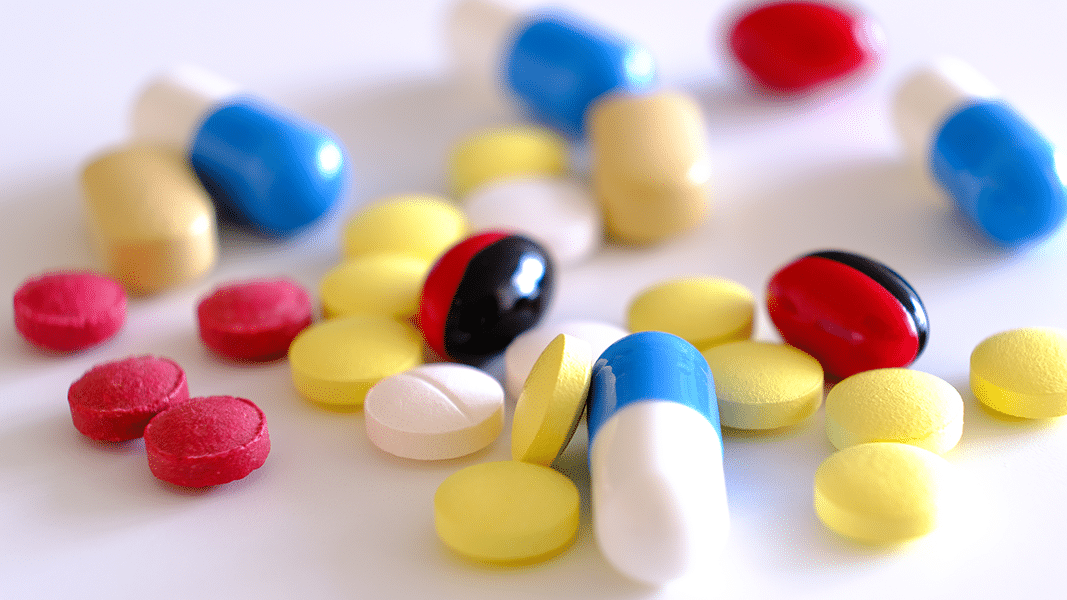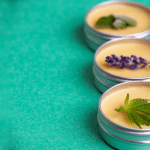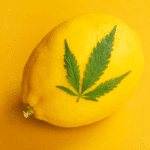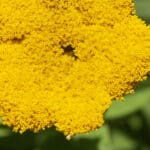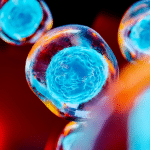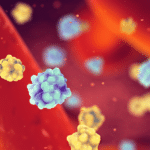The placebo effect is a pervasive medical phenomenon. It occurs when someone responds to an inert treatment or an expectation of benefit in the same way that they would respond to an actual treatment. Experts don’t know exactly how or why, but there’s no disputing that a person given a placebo—be it a sugar pill, a saline injection or even sham surgery or sham acupuncture—will often experience a perceived or real improvement in their condition.1 Placebos with no active drug ingredients can trigger changes in brain chemistry, heart rate, and blood pressure. A placebo can even enhance short-term memory. Brain imaging techniques have shown that placebos have a measurable impact on brain activity.
In 1955, Henry K. Beecher postulated that placebos could have clinically significant effects. Scientists researching the neurobiology of the placebo effect have since determined that placebos and drugs convey effects through common physiological pathways. Placebos reduce pain—a phenomenon known as “placebo analgesia”—by activating the body’s innate painkilling mechanisms.
It’s been known since 1978 that placebo analgesia involves the actual release of endogenous opioids. Non-opioid mechanisms are also involved in placebo interventions that lessen pain. In 2011, Italian researchers led by Fabrizio Benedetti shed new light on the intricate underpinnings of the mind-body connection when they reported that in certain cases the brain’s ability to induce placebo analgesia is dependent on the endocannabinoid system.
Benedetti’s group at the University of Turin demonstrated that non-opioid placebo analgesia is mediated by CB1 cannabinoid receptors, which are prevalent in the brain and central nervous system. The Italian scientists showed that a synthetic cannabinoid receptor antagonist (SR141716) prevents non-opioid placebo analgesia by blocking CB1 receptor transmission. But the CB1 antagonist did not affect opioid placebo responses. “The findings suggest that the endocannabinoid system has a pivotal role in placebo analgesia in some circumstances when the opioid system is not involved,” the researchers concluded.
Great Expectations
It appears that there’s not one type of placebo effect, but many, which entail different physiological mechanisms for different medical conditions and therapeutic modalities. A placebo given as a stimulant will have a stimulating effect on heart rhythm, while a placebo sedative will have a sedating effect. A placebo opiate can depress respiratory function like a real opiate. Some people experience withdrawal symptoms after placebo treatment. Placebos can cause the same side effects as pharmaceuticals.
Expectations of benefit from a treatment, real or sham, will produce a placebo effect. Simply “telling the patients that a painkiller is being injected and actually giving a saline solution is as potent as a 6–8 mg dose of morphine,” a 2004 report explained. A number of studies have documented that even patients who know they are taking a placebo pill may experience a strong placebo response with symptomatic improvements.
For many conditions, active treatments are efficacious but placebo effects also come into play, adding an extra dimension to the healing process. Several studies have shown that painkillers and other drugs are much more effective when patients know they are receiving them. When a patient receives treatment and expects to benefit, there is synergy between the drug and the placebo response, resulting in effects that can be twice as potent as the drug itself; this has been shown for morphine, ketorolac, tramadol, and metamizol. A 1998 meta-analysis by Irving Kirsch suggested that only 25 percent of the efficacy of common antidepressants is due to the drug itself, whereas half of the effect may be attributable to the placebo response.2
On the other hand, when the placebo factor is absent—such as in studies where patients do not know exactly when they receive a drug—the effectiveness of the drug is generally cut in half. This has been observed in treatments for pain, Parkinson’s disease, and anxiety. A study by Luana Colloca and colleagues at the University of Turin Medical School disclosed that diazepam (Valium), when given covertly, was entirely ineffective as an anxiolytic.
Placebo Genetics
Placebos don’t work for everyone. Individual variation in response to placebos is influenced by several factors, including genetics and gender differences. The expectation of an intravenous glucose injection increases dopamine release in the brain, but this only happens in men, not in women.
The placebo effect occurs more prominently in some conditions, less so in others. Depressed patients have a reduced placebo effect, possibly due to lower expectations. Alzheimer’s patients lose the capacity to experience a placebo, a dysfunction attributable to the loss of their prefrontal cortex-dependent capacity to have expectations.
Research into genetic aberrations, known as single-nucleotide polymorphisms (SNPs), has established an important link between the endocannabinoid system and the placebo effect. Fatty acid amide hydrolase (FAAH), a key component of the endocannabinoid system, modulates placebo analgesia, according to a March 2014 study in Molecular Psychiatry. This report indicates that a variant in the gene encoding FAAH, the major metabolizer of the endocannabinoid anandamide, is strongly correlated with one’s sensitivity to placebo effects.
Researchers at the University of Michigan found that placebo receptivity is influenced by a “functional missense variant” of the gene that encodes FAAH, an enzyme that regulates endocannabinoid tone by breaking down anandamide, one of the brain’s own marijuana-like molecules. Generated on-demand in response to physiological stress and imbalance, endogenous cannabinoid compounds bind to cell receptors before they are degraded by FAAH, a process essential for maintaining physiological homeostasis.
A SNP in the FAAH gene results in a particular mutation that decreases the activity of FAAH, thereby leading to higher endocannabinoid levels. (Less FAAH means more endocannabinoid signaling, while excess FAAH depletes endocannabinoid tone.) It appears that a dysfunctional endocannabinoid system negatively affects one’s ability to benefit from the placebo effect, at least with respect to pain.3
The Power of Negative Thinking
The fact that expectation of improvement can cause clinically significant benefits begs the question: Can expectation of harm cause disease? The short answer is yes, and this is called the nocebo effect.
Unfortunately, the nocebo effect is not uncommon in medicine. Benedetti’s group in Italy found that negative expectations can increase the production of inflammatory prostaglandins, thereby worsening pain perception. Both placebos and nocebos affect prostaglandin synthesis, underscoring how positive and negative expectations can activate identical biochemical channels. The nocebo effect arises from the same matrix of conditioning, learning, and expectation that engenders the placebo effect.
Patients undergoing chemotherapy often face a powerful nocebo in the form of anticipatory nausea. The mere thought of another wrenching round of chemo can be devastating. Intense bouts of anticipatory nausea generally occur in cancer patients if the nausea from the first round of chemo is not treated properly. Common antiemetic medications are ineffective in treating anticipatory nausea. But plant cannabinoids show great therapeutic promise for this condition.
Canadian scientists at the University of Guelph in Ontario have done extensive research on the potential of plant cannabinoids for treating anticipatory nausea. They have found that several phytocannabinoids—including THC, CBD, and most significantly CBDA (cannabidiol in its raw, unheated form)—alleviate anticipatory nausea in conditioned lab animals. Additional research on cannabis compounds and anticipatory nausea may yield more clues as to how the endocannabinoid system is involved in placebo/nocebo responses.
Confusing Nuisance or Opportunity?
The most common catalyst of a nocebo response occurs when patients are aware of harmful pharmaceutical side effects. Simply reading about adverse side effects makes one more likely to experience them. This puts doctors in an odd predicament: Of course, they can’t ethically withhold information about the potential risks of a drug or surgical procedure, but sharing this information may bring harm by inducing a nocebo effect. This dilemma also makes it difficult to conduct research studies on the nocebo effect.4
Placebos also pose unique challenges to doctors and scientists. For many years, medical researchers considered the placebo effect to be a confusing nuisance, a confounding variable that skews clinical trials. The placebo factor complicates efforts to evaluate new treatments: What’s actually working—the drug or the expectation of benefit?
Placebos and nocebos both call into question antiquated scientific assumptions that disregard the psychosocial context that informs the therapeutic ritual. Social stimuli, such as a doctor’s words or even a doctor’s office decor, can activate endocannabinoid circuitry and other neurotransmitter networks (including endorphins, dopamine, and cholecystokinin) that mediate the placebo effect. Succinctly put, the placebo effect is the physical translation of mental cues and symbols that are present in a healing environment. Ultimately, it means that thoughts can activate the same brain receptors that cannabis activates, initiating a biochemical signaling cascade that culminates in a placebo response.
What are the ethical implications of a doctor prescribing a placebo without telling the patient? Or not prescribing a placebo if it might help? Deception need not be part of placebo-enhanced therapy, given that patients who realize they are getting a placebo can still experience a powerful placebo response. Fabrizio Benedetti, who has written extensively on the placebo effect, maintains that doctors should not shun practices that promote a placebo response in patients. Benedetti offers eight suggestions for health professionals: “speak positively about treatments, provide encouragement, develop trust, provide reassurance, support relationships, respect uniqueness, explore values, and create ceremony.” Ultimately these practices are about forming a constructive doctor-patient relationship, where the patient trusts the doctor, and the doctor emphasizes positive outcomes.
Adrian Devitt-Lee is a Project CBD contributing writer. Project CBD director Martin A. Lee is the author of Smoke Signals: A Social History of Marijuana—Medical, Recreational and Scientific. © Copyright, Project CBD. May not be reprinted without permission.
Footnotes
- A Finnish meniscal lesion study group’s trial published in the New England Journal of Medicine found sham meniscal (knee) surgery to be equally effective to the actual procedure. They did not compare this to a no-treatment group, however improvements from baseline were seen in both sham and real surgery.
- A meta-analysis is a statistical technique used to evaluate many distinct studies. Instead of considering each individual as sampled from a random population, one considers the study outcome as the random variable. This leads to an estimate that has a much lower false positive rate than if all of the data were pooled and a single analysis was done. Meta-analyses are generally respected, but are prone to flaws if the studies are very small, or use inconsistent methodologies.
- The University of Michigan study examined the effect of this FAAH mutation on opiate-induced placebo analgesia. It did not look into how the FAAH mutation affects endocannabinoid-based placebo painkilling. It is not surprising that mutations in the endocannabinoid system affect how the opioid system functions; the human endocannabinoid and opiate systems communicate extensively, with the µ-opioid receptor and CB1 receptor binding to each other to reduce pain.
- Most studies of the nocebo effect have focused on mild conditions like headache or allergies, or are done using conditioning in lab animals. In one clinical study, Japanese men with moderate allergies were told that the allergen was applied to their skin when, in fact, it was an inert substance. The rashes lasted up to 11 days. In another study, a nocebo suggestion from a doctor along with the opiate remifentanil was as weak as receiving no treatment at all. On the other hand, a placebo suggestion was as potent as covertly being given remifentanil, and receiving both placebo and the opiate was twice as powerful as either alone.
Sources
- Benedetti, F. Placebo-induced improvements: how therapeutic rituals affect the patient’s brain. J. Acupunct. Meridian Stud. 5, 97-103 (2012).
- Benedetti, F., Amanzio, M., Rosato, R. & Blanchard, C. Nonopioid placebo analgesia is mediated by CB1 cannabinoid receptors. Nat. Med. 17, 1228-1230 (2011).
- Benedetti, F., Thoen, W., Blanchard, C., Vighetti, S. & Arduino, C. Pain as a reward: changing the meaning of pain from negative to positive co-activates opioid and cannabinoid systems. Pain 154, 361-367 (2013).
- Bingel, U. et al. The effect of treatment expectation on drug efficacy: imaging the analgesic benefit of the opioid remifentanil. Sci. Transl. Med. 3, 70ra14 (2011).
- Colloca, L., Lopiano, L., Lanotte, M. & Benedetti, F. Overt versus covert treatment for pain, anxiety, and Parkinson’s disease. Lancet Neurol. 3, 679-684 (2004).
- Frisaldi, E., Piedimonte, A. & Benedetti, F. Placebo and nocebo effects: a complex interplay between psychological factors and neurochemical networks. Am. J. Clin. Hypn. 57, 267-284 (2015).
- Ikemi, Y. & Nakagawa, S. A psychosomatic study of contagious dermatitis. Kyushu J Med Sci. 13, 335-350 (1962).
- Jubb, J. & Bensing, J. M. The sweetest pill to swallow: how patient neurobiology can be harnessed to maximise placebo effects. Neurosci. Biobehav. Rev. 37, 2709-2720 (2013).
- Kaptchuk, T. J. et al. Placebos without deception: a randomized controlled trial in irritable bowel syndrome. PLoS One 5, e15591 (2010).
- Kirsch, I. & Sapirstein, G. Listening to Prozac but Hearing Placebo: A Meta-Analysis of Antidepressant Medication. Prevention & Treatment 1 (1998).
- Pecina, M. et al. FAAH selectively influences placebo effects. Mol. Psychiatry 19, 385-391 (2014).
- Sihvonen, R. et al. Arthroscopic partial meniscectomy versus sham surgery for a degenerative meniscal tear. N. Engl. J. Med. 369, 2515-2524 (2013).
- Stern, J. et al. Placebo-mediated, Naloxone-sensitive suggestibility of short-term memory performance. Neurobiol. Learn. Mem. 95, 326-334 (2011).

